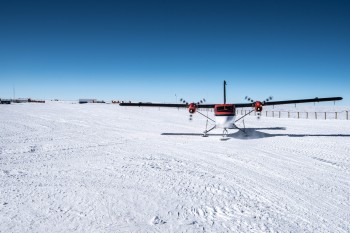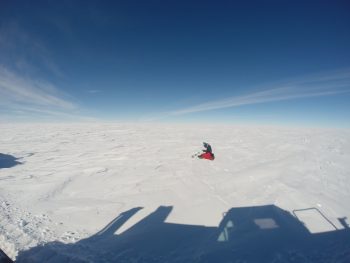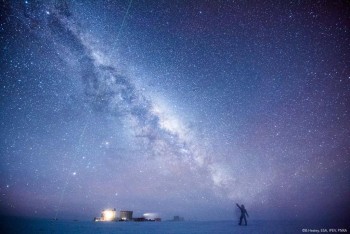Introducing the new ESA-sponsored medical doctor in Concordia research station: Carole Dangoisse with her first blog entry. Are you a medical doctor or know someone who is? ESA is looking for a recruit for next year.
Over the past few months many people have been intrigued by my decision to come to Antarctica for a whole year and have asked what my motivations were. The project does seems quite different from my work as a doctor specialised in critical care. The question is of course very valid, and I thought it would be helpful for myself to set out what my expectations of the coming year are.
I was initially drawn in to the job by the fact that I would be working for the European Space Agency (ESA). I will be making my personal little contribution to future long-term space missions by carrying out research projects at Concordia, a space analogue also called “the White Mars”. As all my relatives and close friends know, I have nurtured the dream of one day becoming an astronaut for as long as I remember! I am also a keen trekker, have travelled all over the world and over the last few years have taken various courses in expedition medicine as this will allow me to combine hiking expeditions and medicine. The post therefore seemed to cater to all of my passions at once!
What also drew me in was the challenge of working in a very stark environment that few people have had the chance to live in, and the thrill of a completely new experience. It quickly became obvious during my thorough training that, although some lab skills are essential, most of them can be learned and that a different set of skills is required for this work. These qualities: the ability to cope in difficult situations with limited resources; problem-solving in stressful environments, team-work in a multicultural group; the capacity to adapt; self-motivation despite a lack of routine, are also what I look forward to developing throughout the year.
 In retrospect, I now recognise that when I applied I did not imagine for one second what an intense and exciting adventure I was signing up for! Before even landing at Concordia in the Basler plane this has been an amazing journey, in terms of places I visited but mostly people I have met. I have encountered many passionate and motivating people who have all given me a small insight into their out-of-ordinary jobs, at ESA but also at IPEV (Institut Polaire Français Paul-Emile Victor), TAAF (Terres Australes et Antarctiques Françaises), PNRA (Programma Nazionale di Ricerche Antartide) and the various research teams for whom I will be conducting the research. I have had a glimpse into a world I knew little of and am in awe of the scientists and technicians who dedicate their time and efforts to perform various scientific endeavours in such extreme environments, with the aim of learning more about ourselves but also about our planet and solar system.
In retrospect, I now recognise that when I applied I did not imagine for one second what an intense and exciting adventure I was signing up for! Before even landing at Concordia in the Basler plane this has been an amazing journey, in terms of places I visited but mostly people I have met. I have encountered many passionate and motivating people who have all given me a small insight into their out-of-ordinary jobs, at ESA but also at IPEV (Institut Polaire Français Paul-Emile Victor), TAAF (Terres Australes et Antarctiques Françaises), PNRA (Programma Nazionale di Ricerche Antartide) and the various research teams for whom I will be conducting the research. I have had a glimpse into a world I knew little of and am in awe of the scientists and technicians who dedicate their time and efforts to perform various scientific endeavours in such extreme environments, with the aim of learning more about ourselves but also about our planet and solar system.
I am extremely grateful to have the chance to be a part of such an incredible experience. I am realistic in that there will be hardships, but I look forward to working with people from very diverse backgrounds, and trust that I will create strong friendships and lasting professional collaborations. I hope that I will remain optimistic throughout the coming challenging months, and that I will accomplish my goal of successfully carrying out the various scientific projects I have been attributed. And who knows, I might inch a little closer to my dream of one day seeing our beautiful Earth from above!






Discussion: no comments